Hyundai i30 Wagon vs Mazda CX-5 – Differences & prices compared
Everyday use, family trips or long-distance drives – here’s where the differences show.
Discover whether Hyundai i30 Wagon or Mazda CX-5 fits your lifestyle better.
Costs and Efficiency: Price and efficiency are key factors when choosing a car – and this is often where the real differences emerge.
Hyundai i30 Wagon has a noticeable advantage in terms of price – it starts at 24800 £, while the Mazda CX-5 costs 30000 £. That’s a price difference of around 5152 £.
Fuel consumption also shows a difference: Hyundai i30 Wagon manages with 5.70 L and is therefore evident more efficient than the Mazda CX-5 with 7 L. The difference is about 1.30 L per 100 km.
Engine and Performance: Power, torque and acceleration are the classic benchmarks for car enthusiasts – and here, some clear differences start to show.
When it comes to engine power, the Mazda CX-5 has a barely noticeable edge – offering 141 HP compared to 140 HP. That’s roughly 1 HP more horsepower.
In acceleration from 0 to 100 km/h, the Hyundai i30 Wagon is slight quicker – completing the sprint in 9.80 s, while the Mazda CX-5 takes 10.50 s. That’s about 0.70 s faster.
In terms of top speed, the Hyundai i30 Wagon performs barely noticeable better – reaching 197 km/h, while the Mazda CX-5 tops out at 195 km/h. The difference is around 2 km/h.
There’s also a difference in torque: Hyundai i30 Wagon pulls hardly perceptible stronger with 253 Nm compared to 238 Nm. That’s about 15 Nm difference.
Space and Everyday Use: Cabin size, boot volume and payload all play a role in everyday practicality. Here, comfort and flexibility make the difference.
Both vehicles offer seating for 5 people.
In curb weight, Hyundai i30 Wagon is clearly perceptible lighter – 1316 kg compared to 1629 kg. The difference is around 313 kg.
In terms of boot space, the Hyundai i30 Wagon offers minimal more room – 602 L compared to 583 L. That’s a difference of about 19 L.
In maximum load capacity, the Mazda CX-5 performs a bit better – up to 2019 L, which is about 369 L more than the Hyundai i30 Wagon.
Who wins the race?
The Hyundai i30 Wagon proves to be wins by a narrow margin and therefore becomes our DriveDuel Champion!
Hyundai i30 Wagon is the better all-rounder in this comparison.
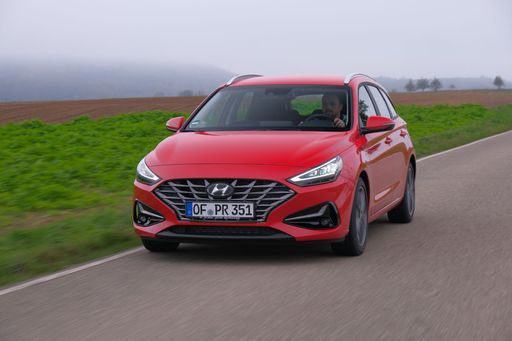
Hyundai i30 Wagon
Hyundai i30 Wagon
The Hyundai i30 Wagon offers a blend of practicality and style, making it a popular choice for families and those in need of extra space. Its sleek exterior and comfortable interior provide a pleasant driving experience, while advanced safety features ensure peace of mind on the road. The i30 Wagon stands out with its impressive fuel efficiency and reliability, catering to both urban and rural lifestyles.
details @ hyundai.news
@ hyundai.news
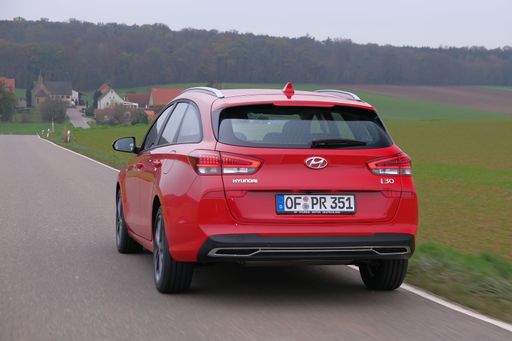 @ hyundai.news
@ hyundai.news
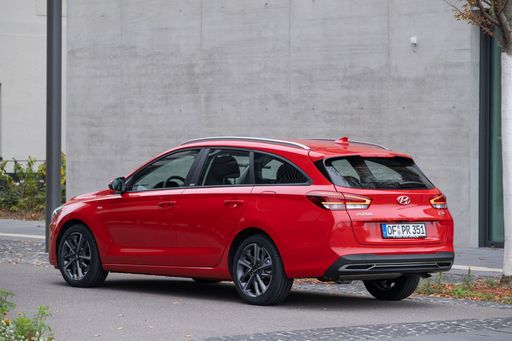 @ hyundai.news
@ hyundai.news
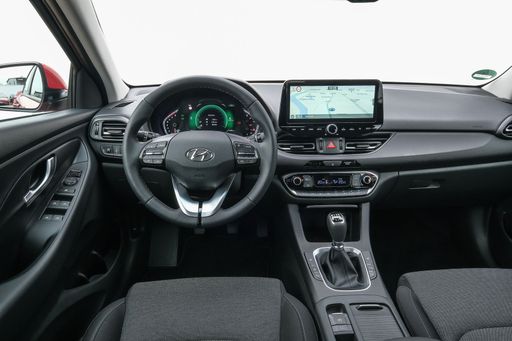 @ hyundai.news
@ hyundai.news
 @ hyundai.news
@ hyundai.news
Mazda CX-5
The Mazda CX-5 exemplifies the perfect blend of style and practicality, offering a sleek design that turns heads while providing ample space for passengers and luggage. Its refined interior boasts high-quality materials and a user-friendly interface, making every journey a comfortable experience. With its engaging driving dynamics, the CX-5 delivers both performance and efficiency, appealing to drivers who crave excitement and reliability.
details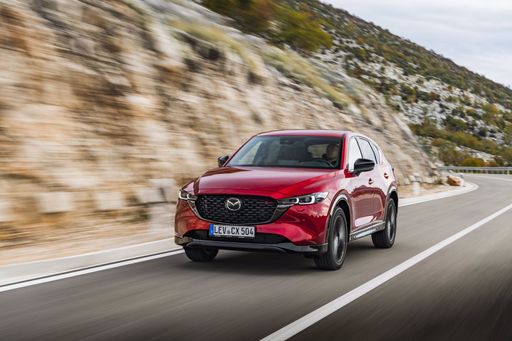 @ de.mazda-press.com
@ de.mazda-press.com
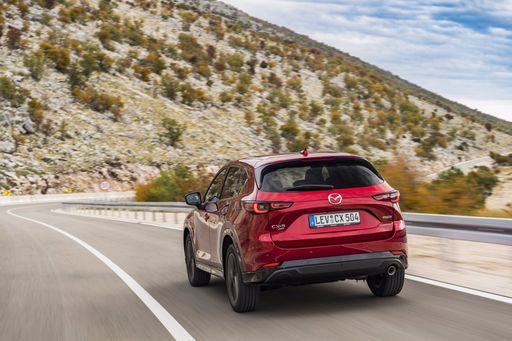 @ de.mazda-press.com
@ de.mazda-press.com
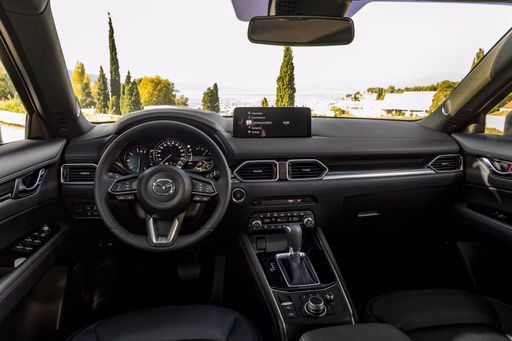 @ de.mazda-press.com
@ de.mazda-press.com

|

|
|
|
|
Costs and Consumption |
|
|---|---|
|
Price
24800 - 30100 £
|
Price
30000 £
|
|
Consumption L/100km
5.7 - 6 L
|
Consumption L/100km
7 L
|
|
Consumption kWh/100km
-
|
Consumption kWh/100km
-
|
|
Electric Range
-
|
Electric Range
-
|
|
Battery Capacity
-
|
Battery Capacity
-
|
|
co2
130 - 136 g/km
|
co2
157 g/km
|
|
Fuel tank capacity
50 L
|
Fuel tank capacity
56 L
|
Dimensions and Body |
|
|---|---|
|
Body Type
Estate
|
Body Type
SUV
|
|
Seats
5
|
Seats
5
|
|
Doors
5
|
Doors
5
|
|
Curb weight
1316 - 1461 kg
|
Curb weight
1629 kg
|
|
Trunk capacity
602 L
|
Trunk capacity
583 L
|
|
Length
4585 mm
|
Length
4690 mm
|
|
Width
1795 mm
|
Width
1860 mm
|
|
Height
1475 mm
|
Height
1695 mm
|
|
Max trunk capacity
1650 L
|
Max trunk capacity
2019 L
|
|
Payload
439 - 524 kg
|
Payload
-
|
Engine and Performance |
|
|---|---|
|
Engine Type
Petrol, Petrol MHEV
|
Engine Type
Petrol MHEV
|
|
Transmission
Manuel, Automatic
|
Transmission
Automatic
|
|
Transmission Detail
Manual Gearbox, Dual-Clutch Automatic
|
Transmission Detail
Automatic Gearbox
|
|
Drive Type
Front-Wheel Drive
|
Drive Type
Front-Wheel Drive
|
|
Power HP
100 - 140 HP
|
Power HP
141 HP
|
|
Acceleration 0-100km/h
9.8 - 13.3 s
|
Acceleration 0-100km/h
10.50 s
|
|
Max Speed
178 - 197 km/h
|
Max Speed
195 km/h
|
|
Torque
172 - 253 Nm
|
Torque
238 Nm
|
|
Number of Cylinders
3 - 4
|
Number of Cylinders
4
|
|
Power kW
74 - 103 kW
|
Power kW
104 kW
|
|
Engine capacity
998 - 1482 cm3
|
Engine capacity
2488 cm3
|
General |
|
|---|---|
|
Model Year
2024
|
Model Year
2025
|
|
CO2 Efficiency Class
D, E
|
CO2 Efficiency Class
F
|
|
Brand
Hyundai
|
Brand
Mazda
|
What drivetrain options does the Hyundai i30 Wagon have?
Available configurations include Front-Wheel Drive.
The prices and data displayed are estimates based on German list prices and may vary by country. This information is not legally binding.
